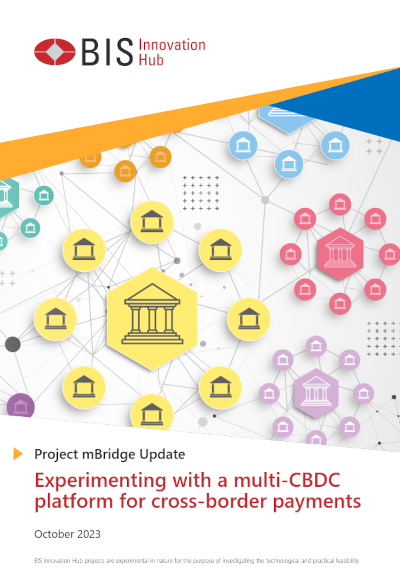Introduction
In October 2023, the BIS released an update on Project mBridge, an experimental project that aims to create a multi-CBDC platform for cross-border payments.
Cryptocurrencies and blockchain technology have been disrupting traditional financial systems for over a decade now. The Bank for International Settlements (BIS) has been at the forefront of exploring the potential of these technologies in the financial sector.
In this blog post, we will explore the key elements of the report and explain the main points of each chapter.
Project mBridge Overview
Project mBridge aims to create a multi-CBDC platform for cross-border payments, focusing on the use case of international trade. The platform is underpinned by custom-built distributed ledger technology (DLT), a set of comprehensive legal rulebook documents, and a fit-for-purpose governance structure. The platform is designed to connect central banks and commercial banks around the world as a public good.
Commercial banks often lack direct relationships with offshore counterparties and must rely on a global network of correspondent banks to make cross-border payments. This process can be slow, expensive, and risky, as correspondent banks may be located in different jurisdictions and may have different regulations and standards. Correspondent banks are also cutting back their services worldwide, leaving many without sufficient or affordable access to the global payments network.
Project mBridge aims to reduce the number of steps involved in cross-border payments by allowing direct, bilateral connectivity between the payee’s and payer’s local banks supported by interoperability with participants’ domestic payment systems. This can lead to faster settlement times, safer settlements in central bank money, more accessible payments with direct connectivity between any two banks on the platform, and cheaper payments with less settlement risk and fewer duplicated processes.

Moreover, the platform is designed to be compliant with each jurisdiction’s KYC/AML/CFT regulations off-bridge, ensuring that banks can ensure compliance while using the platform. Overall, Project mBridge represents an exciting development in the world of cross-border payments, and it has the potential to revolutionize the way that international trade is conducted.
The mBridge Technology
The platform is a purpose-developed permissioned DLT called the mBridge ledger, or mBL. It is built on an EVM-compatible solution, which allows it to process transactions based on smart-contract codes that can run on widely used blockchain platforms.
The platform employs the Dashing consensus algorithm, which is a Byzantine Fault Tolerance (BFT) consensus protocol that uses proofs of partial confirmation of a block validation to reduce the time needed to achieve consensus and to improve the overall protocol performance.

Pseudonymous addresses and encrypted payment meta-data payloads are used to support privacy and confidentiality in transactions. The platform also offers APIs based on the global ISO 20022 messaging standard for financial information to support interoperability and reduce friction when onboarding new institutions.
Legal
The platform is underpinned by a set of comprehensive legal rulebook documents that provide a clear and transparent framework for the platform’s operation. The legal framework is guided by global CPMI frameworks and is designed to ensure compliance with relevant regulations and standards. Legal Entity Identifiers (LEIs) can also be used on mBridge to facilitate the identification of entities involved in transactions, facilitating AML/CFT checks.
The mBridge Governance
The government is designed by a fit-for-purpose structure that ensure the platform’s smooth operation and safeguard currency sovereignty. The governance structure is guided by global CPMI frameworks and is designed to ensure compliance with relevant regulations and standards. The governance structure is also designed to ensure that the platform is transparent, accountable, and responsive to the needs of its users.
Potential Benefits
The potential of this project sits in its capacity to connect central banks and commercial banks around the world as a public good, providing a secure, efficient, and cost-effective platform for cross-border payments. The platform can also help to reduce the costs and risks associated with cross-border payments, improve financial inclusion, and promote economic growth. The platform can also help to promote innovation in the financial sector and support the development of new business models.
Conclusion
In conclusion, Project mBridge is an experimental project that aims to create a multi-CBDC platform for cross-border payments. The platform is underpinned by custom-built distributed ledger technology (DLT), a set of comprehensive legal rulebook documents, and a fit-for-purpose governance structure.
The platform is designed to connect central banks and commercial banks around the world as a public good, providing a secure, efficient, and cost-effective platform for cross-border payments. The platform has the potential to reduce the costs and risks associated with cross-border payments, improve financial inclusion, and promote economic growth. The platform can also help to promote innovation in the financial sector and support the development of new business models.
Overall, Project mBridge represents an exciting development in the world of cryptocurrencies and blockchain technology, and it will be interesting to see how the project develops in the future.

Leave a Reply